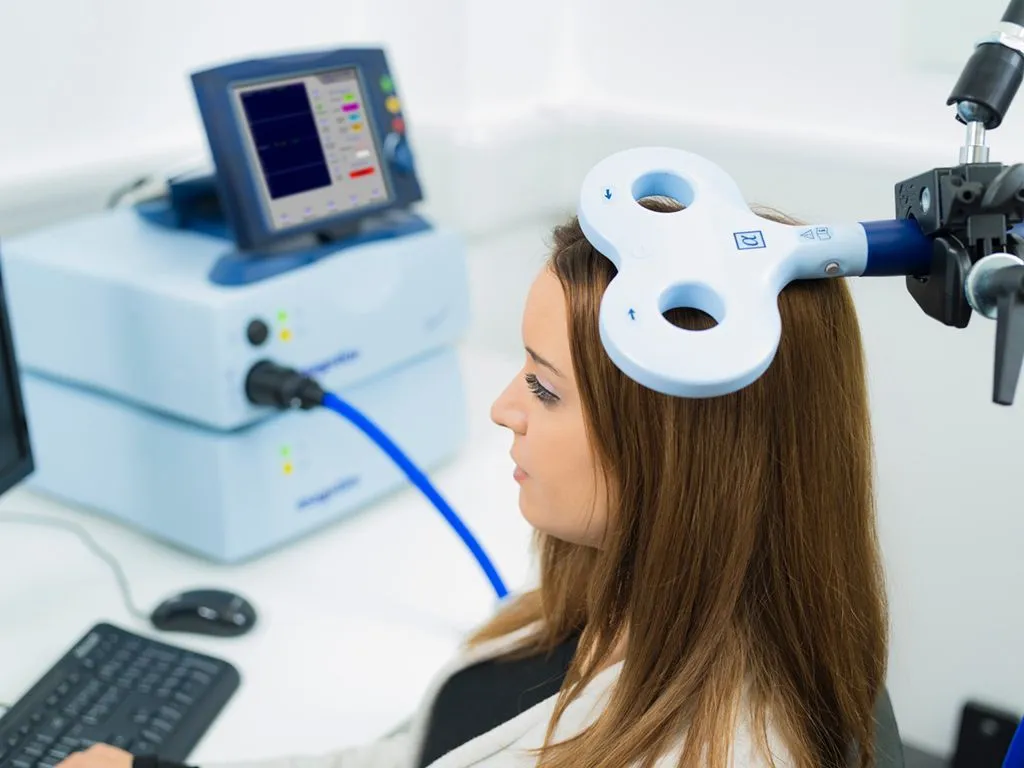Transcranial magnetic stimulation (TMS) is a non-invasive type of brain stimulation where an alternating magnetic field is applied to the brain via electrodes. TMS can be used in treating a variety of disorders including chronic pain, depression and chronic fatigue syndrome, as well as other neurological problems. TMS can also be used in conditions such as motor disorders, seizures, and multiple sclerosis (MS), to name a few. The therapy has also shown promise in treating attention deficit disorder (ADD) and other attention deficit related disorders.
How does TMS work? It's an advanced noninvasive form of brain stimulations using low-level electromagnetic fields to modulate brain activity. These low level fields are generated by two types of magnetic fields; those induced by ultrasound and those induced by magnetizing liquids. TMS uses a small hand-held device known as a TMS machine. These devices have been developed to produce the desired magnetic fields required to elicit the desired effect on the brain.
In addition to these non-permanent (lasting) magnetic fields, some forms of transcranial magnetic stimulation may cause some short-term side effects in some patients. This is normally mild and is not considered to be harmful. However, if the side effects interfere with your day-to-day functioning or if they become severe, you should consult your doctor immediately and discuss how to proceed with treatment.
The short-term side effects seen in most people receiving transcranial magnetic stimulation are muscle spasms, increased pulse rate and some muscle contractions. Common complaints from patients undergoing this procedure include headaches, difficulty concentrating and nausea. Sometimes, the discomfort can become unbearable and may require medical intervention. In rare instances, medication may be prescribed to alleviate the discomfort but in most cases, patients are able to continue with their daily routines without incident.
A more common side effect associated with this treatment procedure is fatigue. It is not uncommon for patients to report feeling weak and tired after a procedure. If this fatigue persists, it may require additional treatments or you should consult your doctor. However, it is important to note that this is only an issue if the patient is unable to continue with his/her normal activities due to the fatigue.
Another condition that can occur while undergoing transcranial magnetic stimulation (TMS) is the development of migraines. Migraines are pain related but they can also be accompanied by nausea, vomiting and even fever. Some people experience a combination of symptoms. While these side effects can occur in any patient, they are more commonly seen in younger patients and those with weaker immune systems.
One of the most serious side effects of this treatment option is strokes. stroke occurs when there is a lack of oxygen to the brain and the result is decreased brain function. The main symptom of a stroke is difficulty moving and speaking which are indicative of repetitive transcranial magnetic stimulation (rtms) in action. If you are at risk for developing a stroke it is important that you inform your doctor about your desire to undergoing tms treatment before the procedure.
One of the major benefits of undergoing this type of treatment is that it is painless. This is because the magnetic fields generated are so gentle that they do not irritate the skin or the muscles. As a result, there is no pain involved with the procedure which allows the patient to focus on other things such as their recovery. Since the electrical impulses are generated by the brain itself it is believed that the body does not feel the effects of the stimulation at all and there is also no risk of adverse health effects occurring from it such as heart attacks or cerebral palsy. Overall this procedure is considered to be a very safe and effective treatment option for those suffering from neurological conditions.
Sources:
